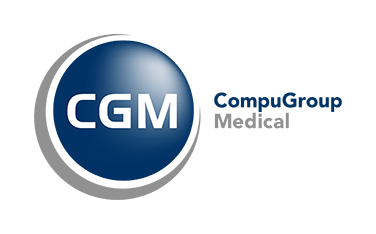Cyber security and keeping patient data safe are crucial to running an effective and profitable healthcare practice, as well as building a relationship of trust with patients.
Although most of us understand the POPPIA regulations, for example, we don’t often personally research the methods of secure storage and optimal security required.
With over 20 years in the industry and as the leading MedTech software development company in South Africa, CGM, (CompuGroup Medical), understands that sensitive customer data and management should form the backbone of our specially designed software systems. Through multiple encryption techniques that allow fast performance and safe data usability, our purpose is that data is not only collected and coded optimally but that there is fast performance when access is required, and in the correct format for billing or insurance purposes.
Who wants this information?
In today's landscape where increasingly more services and interactions are being exposed via digital channels, the state of application security has become even more critical than ever. Individuals, groups, or entities such as cybercriminals, hackers, hacktivists (hacker groups), also referred to as “threat actors”, that possesses the intent and capability to conduct malicious activities or launch cyber-attacks against computer systems are continuously evolving their tactics to exploit vulnerabilities and gain unauthorised access to sensitive information.
These threat actors deploy sophisticated techniques such as malware, phishing, and social engineering attacks to target applications, aiming to steal personal data, financial information, and intellectual property. This threat poses a significant risk to both individuals and organisations, necessitating a proactive approach to mitigate potential harm.
Types of security attacks
There are various forms of attack, and each one has the potential to compromise the security and the integrity of computer systems, IT networks, and data. Understanding these types of cybersecurity attacks can help install effective security strategies and mitigate their impact.
- Malware: This is a form of malicious software designed to infiltrate, damage, or gain unauthorised access to computer systems and data.
Some examples of malware:
- Viruses and Worms: Malicious software programs designed to replicate and spread to other computer systems, often with the intent to cause harm, disrupt operations, or steal sensitive information.
- Trojans: This is software that disguises itself as a legitimate program or file to deceive users into executing or installing it.
- Ransomware: This software is designed to encrypt files and/or lock users out of their systems. Users are then demanded to pay a ransom in exchange for restoring access to their system or decrypting the affected files.
- Spyware: This software secretly monitors and collects information about a user's activities, such as internet browsing habits, keystrokes, and personal data, without their consent.
- Phishing: These attacks aim to fraudulently obtain sensitive information, such as login credentials, financial details, or personal data, by impersonating those entities you trust using deceptive emails, websites, or messages.
- Phishing: These attacks aim to fraudulently obtain sensitive information, such as login credentials, financial details, or personal data, by impersonating those entities you trust using deceptive emails, websites, or messages.
- Denial-of-Service (DoS) and Distributed Denial-of-Service (DDoS) Attacks: These attacks aim to disrupt the availability of services and/or networks by overwhelming them with a high volume of traffic, rendering them inaccessible to users.
- Man-in-the-Middle (MitM) Attacks: During this type of attack a cybercriminal intercepts and potentially alters communication between two parties, allowing them to eavesdrop on sensitive information and/or manipulate the data being exchanged.
- Insider Threats: These threats are attributed to human behaviour, and revolve around employees or contractors being either malicious or negligent by intentionally or unintentionally compromising sensitive data and/or systems.
- Social Engineering: During social engineering attacks individuals are tricked into divulging confidential information, providing unauthorised access to systems, or performing actions that compromise security. These attacks therefore rely on psychological manipulation and deception rather than technical vulnerabilities.
Offence is the best defense
Although user education and staying informed about risks is a very important factor - such as understanding when to avoid suspicious links and attachments and choosing well constructed passwords - applying updated software and dedicated systems such as the ones that CGM continuously evolve, go a long way in ensuring your applications are as bulletproof as possible. Having weak or inadequate authentication mechanisms to positively identify users that are allowed access to systems and applications can result in unauthorized users gaining access. This will undoubtedly compromise security. Have a good password strategy in place that enforces unique and well-constructed passwords, also referred to as “strong passwords”, and enable measures like two-factor authentication that enforce two or more forms of identification to significantly enhance security by adding an extra layer of protection against unauthorized access.
